Bill Lenkaitis
Greg Lens
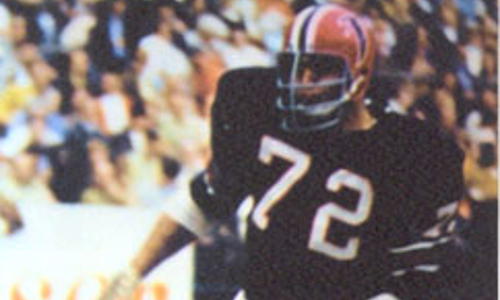
CTE and what it means to me
Chronic Traumatic Encephalopathy is a progressive degenerative disease of the brain found in people with a history of repetitive brain trauma.
I chose to do my project on CTE because my grandfather, who played in the National Football League as well as the World Football League, suffered from and died with this horrible disease. With all of the recent attention and awareness around sports related concussions, I really wanted to learn more and see what I could do to educate myself, others and raise my own awareness.
It was important for me to really understand how my grandfather was affected by CTE. When I was five years old, I remember telling him that when I grew up I wanted to be a football player just like he was. He kind of laughed but then told me that I should stick with games like golf and tennis. He said those are two sports that you can play your whole life and your body won’t take a beating like it does in football. Then he told me that football just wasn’t worth it. I still really like watching football and I still wanted to play too. But I just have to think, is it really worth it? I am still at risk though, because I play soccer. CTE does not only affect football players, all athletes take chances when playing sports.
In order to protect myself, I choose to learn more. How can I prevent this from happening to me? In order to help others, I choose to talk about what I learn. How can I help to keep my teammates and friends safer?
I think what’s really interesting about my project on CTE and sports related concussion research is that it’s new information that can change the way that we play dangerous games. Rules are changing and concussions are getting way more attention than back when my grandfather played. Back then they were just told to go right back in and play. Now players are looked over on the sidelines before deciding if they can go back in. This topic has personally affected my family which also makes it interesting to me.
Most of the research that I put into my project had to do with signs of CTE and how it can be caused. I also mentioned the team at the Concussion Legacy Foundation and Boston University. They are who I learned from the most. Chris Nowinski, the founder of CLF has written a book and now a movies has been made from it. It’s called Head Games.
The research that’s been done is great. On their site I found 7 steps for brain safety. I thought this was very easy to follow and very important in making a difference.
CTE 7 steps for Brain Safety:
CTE is preventable with a few steps
1.Preseason education for athletes
2. Preseason education for coaches
3. Preseason education for parents
4. CDC Concussion Action Plan:
- Remove athlete from play.
- Ensure athlete is evaluated by an appropriate healthcare professional. DON’T JUDGE IT YOURSELF.
- Inform athletes’ parent or guardian.
- Allow athlete to return to play with a health care professionals’ approval.
5. Utilize CDC Heads up Program and clipboard sticker.
6. Prevention through neck strengthening.
7. Prevention through overall Brain Trauma.
I really hope that I have helped you to understand the brain disease known as CTE, a little more. With these 7 steps as a start and a guide, I feel like we can be on our way to safer competitive sports.
Jimmy Lesane
Ray Lewis III
Tony Liscio
Doug Long
Edward Lothamer
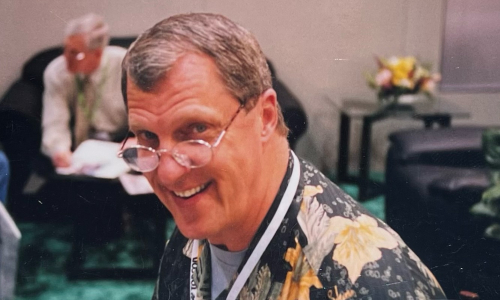
Ed was born in Detroit, MI in May 1942. He was the only child of Edward Sr. and Barbara. As a young man he was dealt a lot of challenging hurdles. His mother, who was his only parent present in his life for the most part, was stricken with cancer in her 30’s and so she and “Eddy” moved in with his maternal grandmother to help ease the burden of supporting his ill mom and himself at that time. His grandmother was the one person he credited for raising him. Those of us who knew Ed believe that that strong female influence molded him into the exceptional man he turned out to be.
Ed thrived in basketball and football his teenage years, with his height reaching 6’5″. He attended Redford High School in Detroit from 1956-1960. He earned a football scholarship to Michigan State and played for the Spartans from 1960-1964, earning his degree in Education. Due to his family’s ongoing unfortunate circumstances, they never saw Ed play a game in college. In 1964, Ed was drafted by both the Baltimore Colts and the Kansas City Chiefs. He was preparing for the move to Baltimore when Lamar Hunt, the owner of the Kansas City Chiefs, showed up at his dorm room and convinced him to come and play for Kansas City instead.
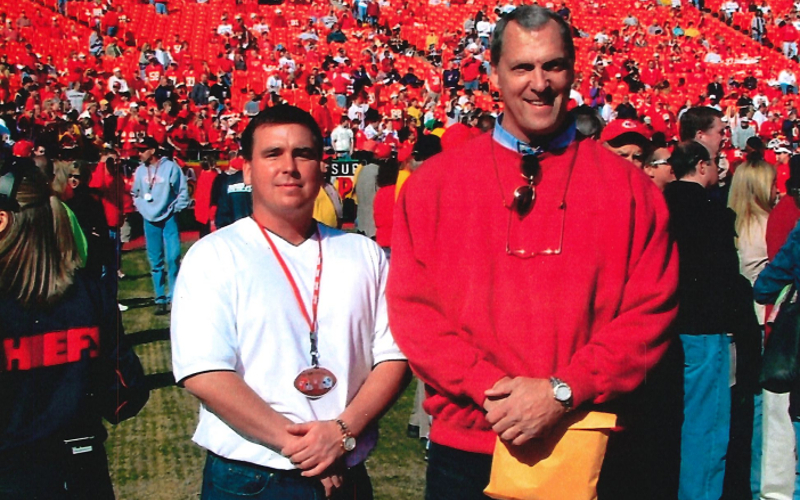
Ed played the majority of his professional career as a defensive tackle, #82. He played for eight seasons and enjoyed a lot of memorable bonds with his teammates during those years and beyond. Kansas City became home for Ed throughout those years with the Chiefs. In the offseasons he owned a couple of popular nightclubs to make ends meet for his growing family. Ed loved music his whole life, especially live bands, and talked of spending many long evenings hanging out with the singers and bands he hired from all different places, to play in his bars.
In March 1971 he married the love of his life, Elisabeth. He retired from the Chiefs the first time that year, but his coach, Hank Stram, asked him to reconsider and come back to play for the team again in the newly constructed Arrowhead Stadium. Ed played that season in 1972, but during a practice he was badly injured and that stopped him from returning in 1973. He made the decision to retire from football and try his luck at a different career.
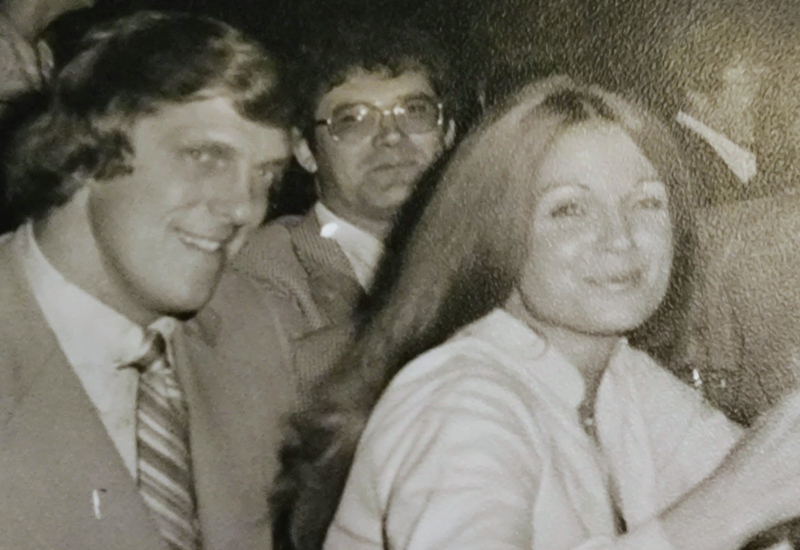
Through his determination, perseverance, and connections in Kansas City, Ed and a partner were able to start a heavy equipment business in 1977, and that company eventually became the largest of its kind in the city and surrounding areas for a number of years. That company grew and expanded to Charlotte, Raleigh, Durham, Tulsa, Oklahoma City, and southeastern Florida with the help of his wife, Beth, and many great people who surrounded him. In 1999, at age 58, Ed sold his companies with the thought of retiring to an island beach somewhere down the road. His 25+ year success in the pumping industry was remarkable and renowned throughout the US, and Ed made many more lifelong friends during those times.
Ed continued to contribute to the NFL through his chapter of the Alumni Organization for the rest of his years. He served as their VP for a while and took much pride in their work for charities of all kinds. He also received a “Father of the Year” honor from the Juvenile Diabetes Foundation for his contributions to their cause.
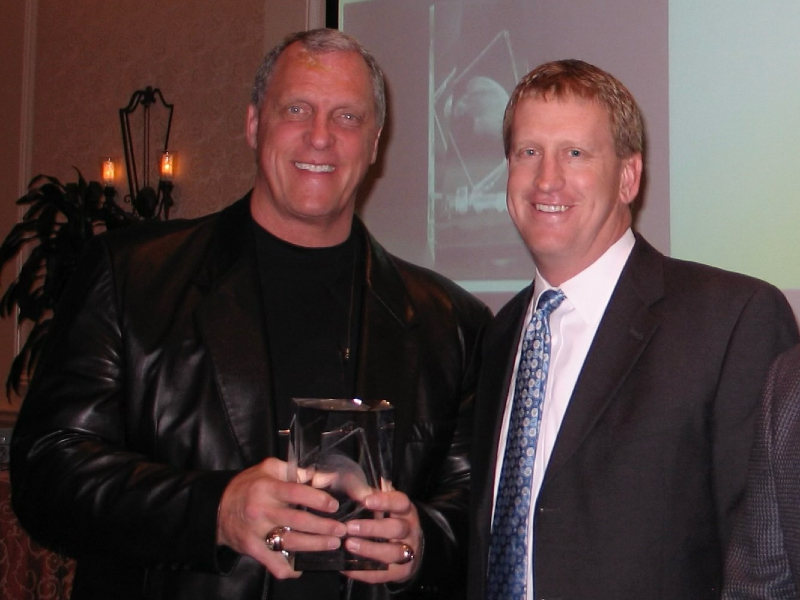
Before CTE completely debilitated his mind, Ed spent a lot of time hanging around his son-in-law’s real estate office, visiting with the realtors, staff, and guests there. He left a marked impression on everybody he struck up conversation with, no matter where it was.
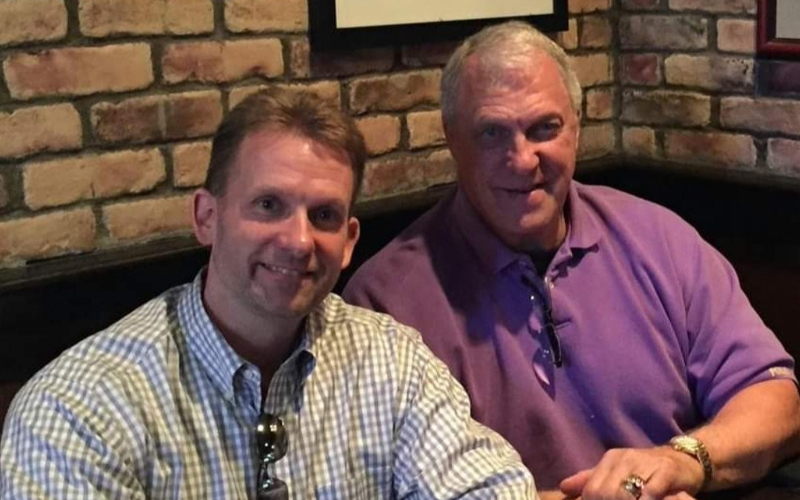
To name the best qualities of Ed would be a list too long to finish. He was kind, comforting, compassionate, fun to be around, and had a way about him that made everyone feel good. He took a true interest in the lives of the people he met and often came to know well. He had a larger than life presence and was incredibly sharp. He had the ability to see all sides on issues and never judged anyone for being who they were. He was a “gentle giant” who loved laughing and learning new things. Before CTE stole his ability to concentrate, he read a lot. He was of the mindset that the world was full of secrets just waiting to be found out and that magic and miracles happened everyday. When he was younger, he stayed in fantastic physical shape and encouraged others to do the same. He loved to travel and see new things, but mostly he delighted in making others happy. Ed connected with other human beings on a level that could rarely be matched and had an understanding and acceptance of the imperfections that come with this earthly existence. He was an extraordinary character who related to the entire spectrum of souls he encountered. He was an exemplary man and that never wavered.
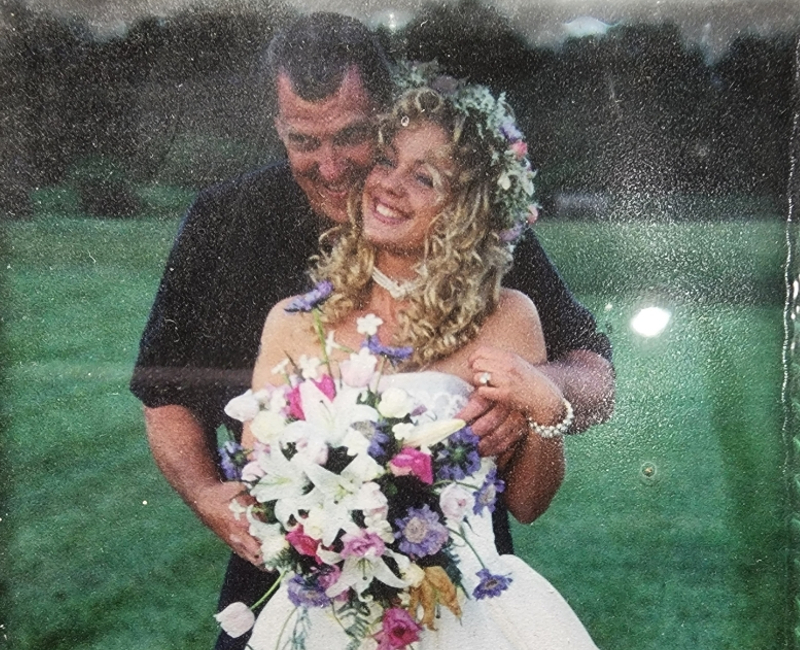
My father died on June 19, 2022, at a rehab facility following a two week hospital stay. He had been sleeping up to 20 hours a day before his death, had a Parkinson’s tremor, could not stand or walk, could not carry a conversation or speak, could no longer eat, and had finally lost all of the will he had fought like a soldier to maintain throughout his journey here on Earth. The man we loved, deeply admired, and relied on for so much of our lives had slowly and painfully disappeared in front of our eyes. His condition was finally irreparable.
We donated Ed’s brain to the Concussion Legacy Foundation per his wishes. He wanted his brain to be studied because we now understand he was aware that its functions were compromised for many, many years after football. His desire was to help others, whether athletes, military, or anyone who had dealt with multiple concussions like he had. We, his family, also believe that he too wanted to give us a last gift of knowing his truth. Dad had been in steady and then severe decline for the last 15-20 years of his life and watching the destruction his brain injuries had caused him, and in turn his family, was agonizing for all of us. We were told he had some type of “dementia,” with some forward thinking doctors alluding to possible CTE and he had gotten a number of opinions over the years about his volatile and diminishing condition. No medicines helped him and no treatment options were offered to him, so we were finally reduced to just trying our best to protect his dignity and keep him as comfortable as we could with the limited resources we had available. Witnessing the effects of CTE caused my family so much heartache but now reflecting on what it all must have felt like for HIM to endure is much worse for us to accept. His loss, his confusion, his frustration, his isolation, and mostly his fear are utterly devastating for us to think about. We feel deep sorrow and enormous guilt about not understanding enough and not knowing how to ease his affliction. CTE took a man with an epic presence and a discerning mind and minimized him to just a shell of that person. We, as his family and friends, would never wish that on our worst enemies.
After receiving the stage 4 CTE diagnosis from BU and learning more about what my dad was dealing with, many of the things that haunted us and perplexed us about his brain functions and personality changes over the years made more sense. Although knowing certainly does not make it easier to bear for us, it does explain why the problems were present and it gives the “void” a name. We can only wish that he too could have gotten that explanation in life. I know we have been asked the question if we think he would go back and do it all again, knowing this would have been the outcome and ultimately his demise? Only he could answer that with certainty.
The biggest differences between now and the days when my father played football is that for many young athletes, sports can be their way out of poverty and can give them hope for a better life. My father made $42,000 during his final season in the NFL, which we now realize was the price he exchanged for his brain. Knowledge today offers athletes more choices, and so many more safety protocols are in place to protect the players in these times. And the money the league pays the players can mean a lifetime of financial security for them and their families in the present day.
The afternoon that we received the results of my dad’s tests, it was beyond painful for those of us who had loved him during his time here. But it also made me even more proud to be a warrior’s daughter. He was a fighter in all that he accomplished and who he was. Against all odds, my dad had a powerful story to tell. We will make it our mission to tell that story and carry on his legacy for as long as we are capable. I could not be more thankful for him.
Ed Lothamer’s favorite parting words were, “Keep smiling.” We will, dad.
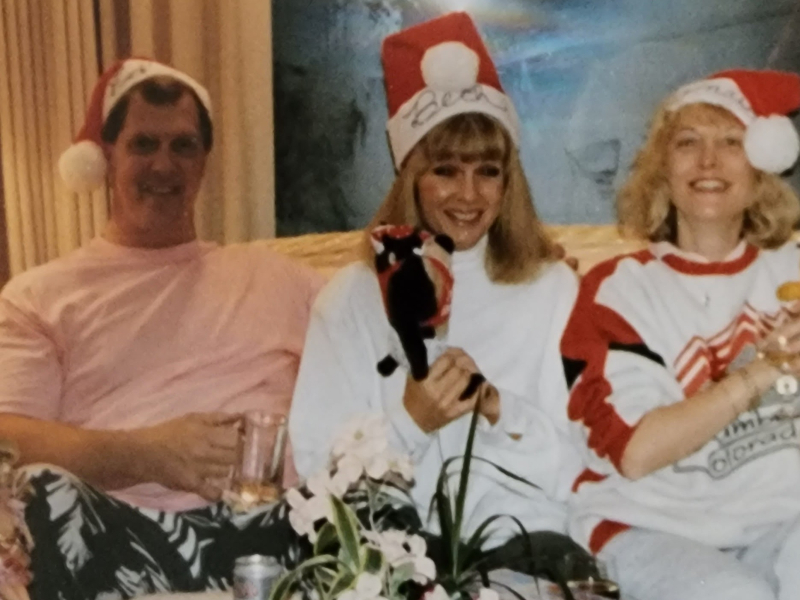
David Lunceford
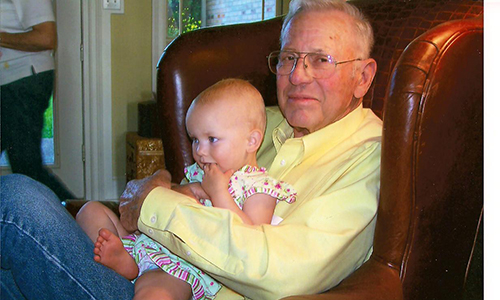
David’s obituary from the Tyler Morning Telegraph
David Glenn Lunceford, born May 6, 1934, in Canton, Texas, passed away Saturday, May 23, 2009, at the age of 75 in Tyler, Texas, from complications associated with Alzheimers. Survived by wife of 54 years, Nancy Duckett Lunceford, Tyler, Texas; daughter and son-in-law, Lindy and Nathan Ingram, Magnolia, Texas; daughter, Laurie Hartwig, Tyler, Texas; son and daughter-in-law, Lee and Carrie Lunceford, Little Rock, Ark.; sister-in-law, Dr. Jane Duckett, Dallas, Texas.; grandchildren, Tyler and Amber Hartwig, Morgan, Trent and Molly Hartwig, Logan and Cindi Ingram, Caleb and Carter Ingram, Lauren, Olivia and McKenna Lunceford; grandson Carson Brown; great-granddaughter Carley Ingram; great-grandson, Kyle David Hartwig.
Mr. Lunceford graduated from Van High School in Van, Texas, in 1952, where he was an outstanding athlete, lettering in football, basketball and track. Legendary coach Floyd Wagstaff offered him a scholarship to Tyler Junior College in Tyler, Texas. At TJC he was selected as a Junior College All American in football, was captain of the football team and president of the student body. He was highly recruited after graduating from TJC and chose Baylor University to continue his football career. At Baylor he was the starting tackle, playing offense and defense. The team played in the Gator Bowl 1954 and the Sugar Bowl in 1957. He graduated from Baylor in 1957 with a BBA degree. He was drafted for professional football by the Chicago Cardinals, and he was one of two rookies who made the team in 1957. He won a starting position at offensive guard. He played two years for the Cardinals before injuries ended his football career.
He went to work for Humble Oil and Refining Company in 1958. He enjoyed a career with Humble that took him to various jobs in Texas, Colorado, New Mexico and Louisiana. He retired after 34 years of service from Exxon Corporation in 1992 as the General Manager for Inland Fleet Operations of Exxon Shipping Company. He served in many areas of business related organizations and was a Director Emeritus of the American Waterway Operators. He served on the Mississippi Waterway Safety Advisory Committee and received a Meritorious Public Service Award from the United States Coast Guard. After retirement from Exxon, he served as a management consultant to the maritime shipping industry for many years.
Mr. Lunceford was elected to the Board of Trustees of Tyler Junior College and was elected to the Board of Directors of Heritage Land Bank in Tyler, Texas. He served 12 years as a Trustee at TJC and was Chairman of the Board and on several other committees. He also was elected Chairman of the Board of the Heritage Land Bank.
Mr. Lunceford was selected as the Outstanding Alumnus at TJC in 1985. In 1995 he was inducted into the TJC Sports Circle of Honor. He was ex-chairman of the Floyd and Nell Wagstaff Endowed Athletic Scholarship. He and his wife established several endowed scholarships at TJC and Harding University in Searcy, Arkansas. In 2006 an endowed Legacy Scholarship honoring Mr. Lunceford was established at Tyler Junior College. He was selected as the Distinguished Alumnus of Van High School in 2006.
He was a member of the Jamestown Church of Christ in Jamestown, Texas, and was an elder of the church. More recently he was a member of the Broadway Church of Christ in Tyler, Texas.